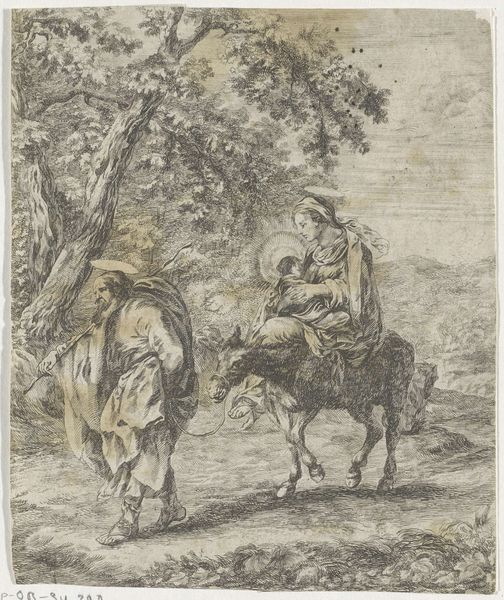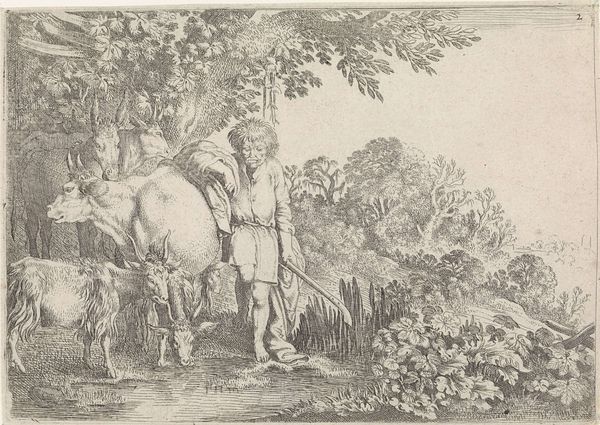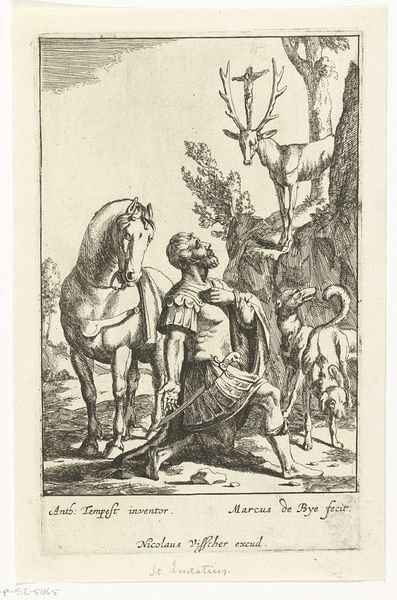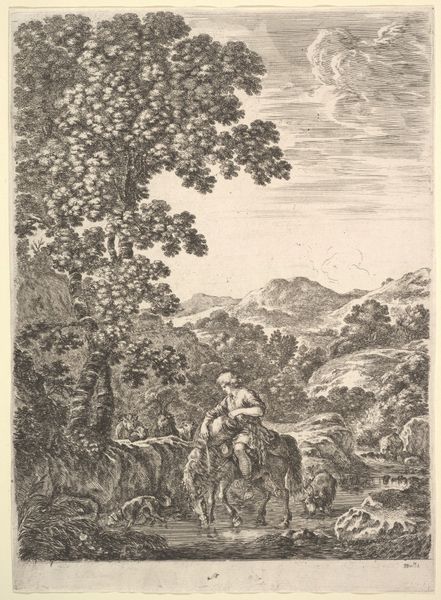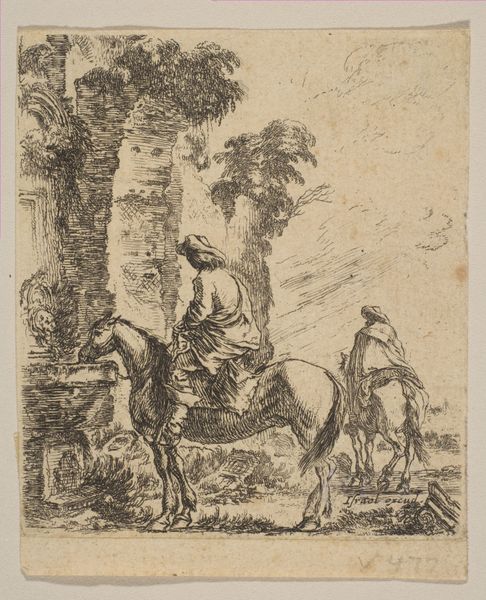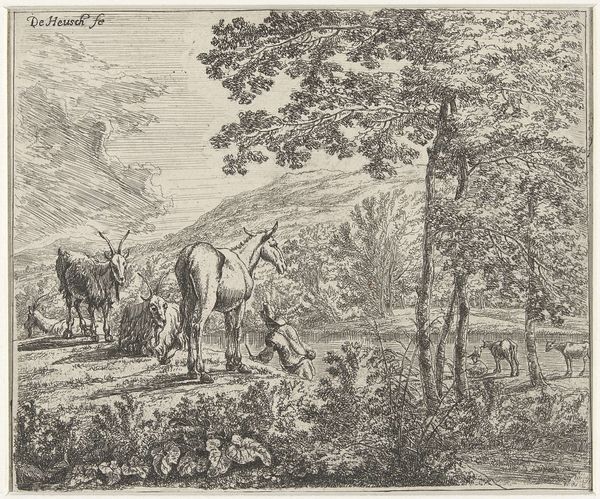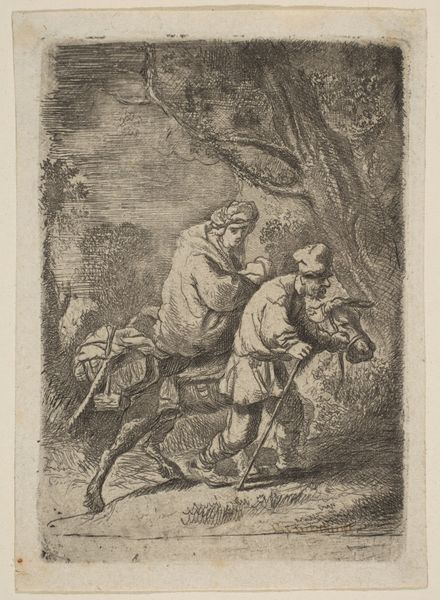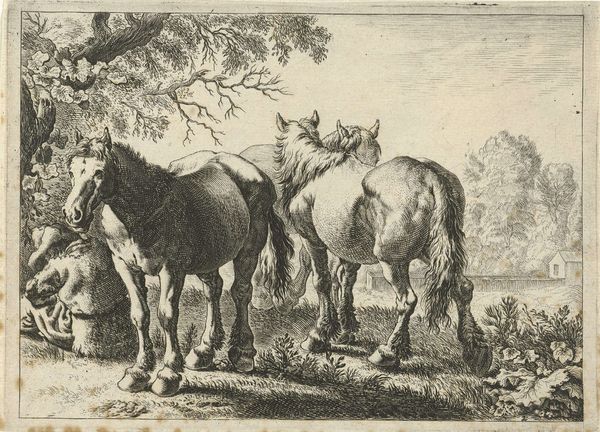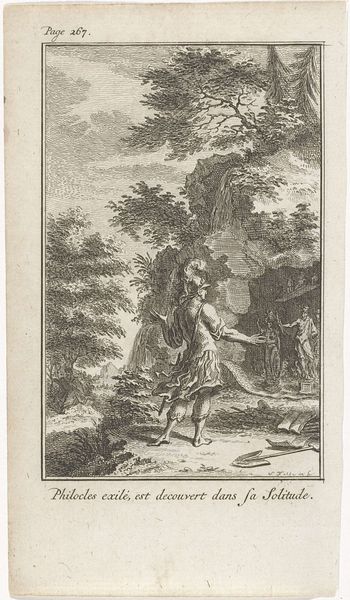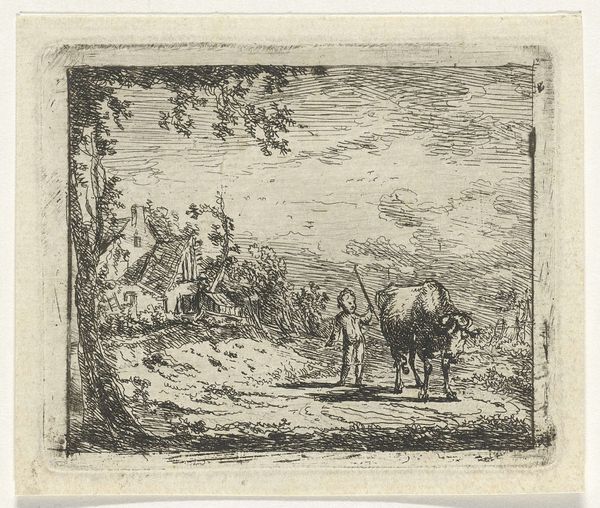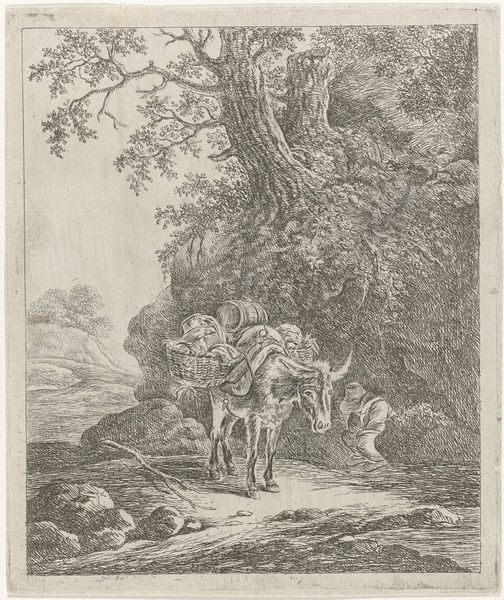
print, etching, engraving
#
light pencil work
#
narrative-art
#
baroque
# print
#
pen sketch
#
etching
#
pencil sketch
#
old engraving style
#
landscape
#
figuration
#
personal sketchbook
#
pen-ink sketch
#
pen work
#
sketchbook drawing
#
pencil work
#
history-painting
#
sketchbook art
#
engraving
Dimensions: height 150 mm, width 120 mm
Copyright: Rijks Museum: Open Domain
Editor: Here we have Stefano della Bella's "Flight into Egypt," an etching dating from sometime between 1620 and 1664. It’s currently housed in the Rijksmuseum. The landscape elements really stand out to me; the trees especially seem to have such depth. How do you interpret this work, looking at it through a more formal lens? Curator: It is interesting to observe the use of line here, isn’t it? Note how the varying densities of hatching create tonal contrasts, establishing a visual hierarchy. What catches your eye first? Editor: Definitely Mary and Jesus, because they are the lightest part of the image. Curator: Precisely. The artist masterfully uses light and shadow, directing the viewer’s eye. Notice how the strong horizontal lines in the sky contrast with the intricate detailing of the figures and foliage in the foreground, what does this opposition suggest? Editor: Maybe a separation, of earth and sky? The divine from the mundane? Curator: Perhaps. Also, consider the textures – the rough bark of the tree, the soft folds of Mary's garments, the tired gait of Joseph. How do these varied surfaces enrich the composition? Editor: I see what you mean. It gives it depth, it creates areas of focus and lets your eyes flow through the composition. Are there perhaps other compositional elements to consider? Curator: Consider the curvilinear lines describing the natural forms and the figure's movements and posture and how this introduces dynamic rhythm to the essentially still image, yet how the landscape behind introduces geometric structure as a way of offsetting the composition.. This suggests movement but with some restraints. The work, despite the use of a very conventional technique for the period, manages to combine many oppositional techniques. Editor: That's fascinating, the restraints in the landscape compared with the flowy rhythm of the composition makes it visually very satisfying. Thank you for shedding some light into this print! Curator: My pleasure, I think this method of observing art will guide you through your learning process!
Comments
No comments
Be the first to comment and join the conversation on the ultimate creative platform.
